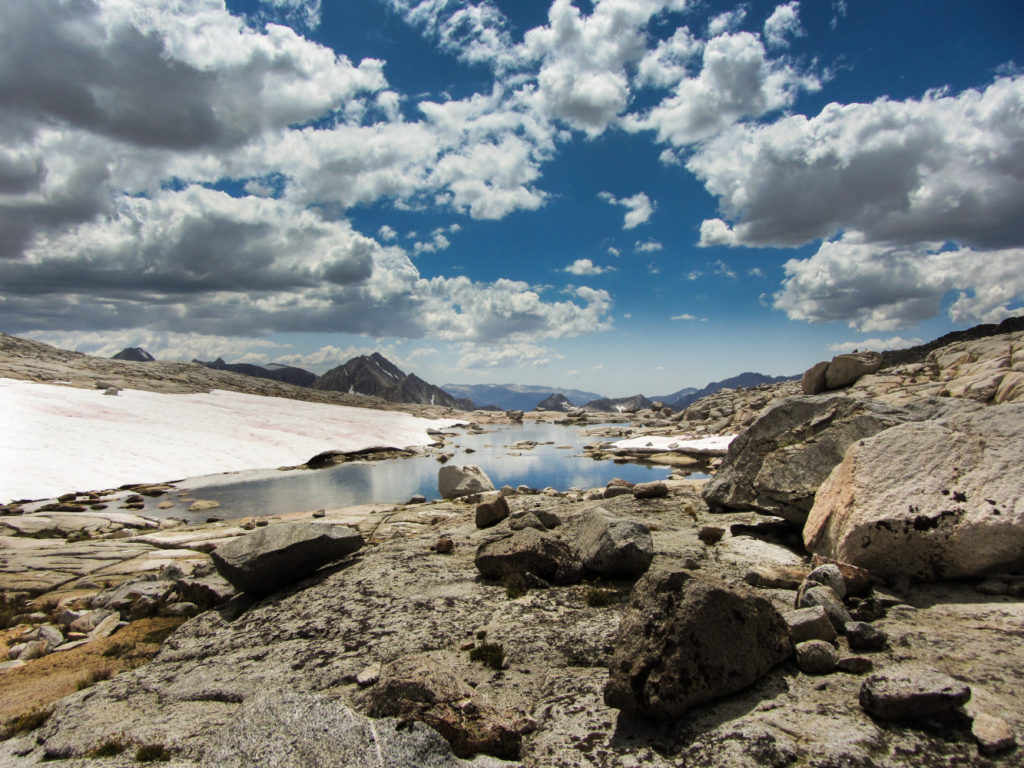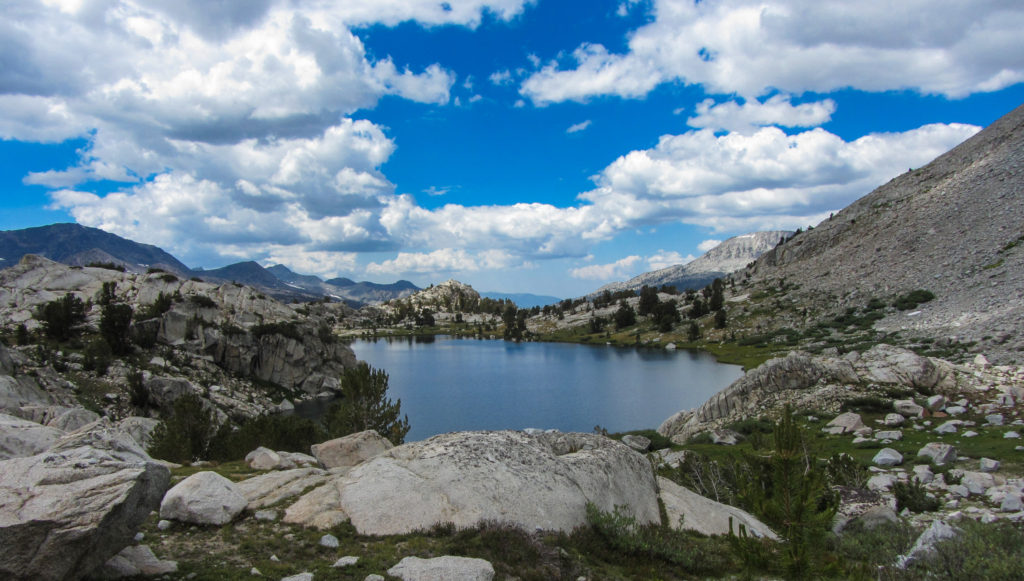Want to jump straight to the data and facts for this trip? ……. click here!
Or maybe just look at the navigational challenges of all the passes that await ……. click here!
Wanna really read the whole trip report? …… if so click here.

If you ended up here then there is a good chance that you already know something about the Sierra High Route, short SHR. If not or if not enough here is the creator’s introduction shortened:
“The timberline country of California’s Sierra Nevada is dominated in summertime by five elements: meadowlands, gnarled trees, water, stone, and a cobalt sky occasionally augmented by towering cumulus clouds. In this austere landscape, backpackers who travel along the Sierra High Route—a rugged alternative to the John Muir Trail—can forget the outside world and concentrate solely on moving cross-country from one pristine campsite to another. Although the popular John Muir Trail (shortened herein to Muir Trail) traverses this fascinating timberline country on occasion, it frequently descends west into heavily forested regions in order to circumvent the great ridges that jut out from the main Sierra crest. These diversions from what I regard as the range’s finest terrain become especially annoying in the northern half of the High Sierra, for here the famed path traverses relatively lackluster country for many miles. It occurred to me twenty years ago that if I scouted the range carefully I might be able to piece together a continuous route that would remain longer in timberline country than does the Muir Trail. Such a route, if feasible, would offer adventurous hikers an opportunity to visit superb country while simultaneously avoiding the multitudes of backpackers who prefer well-marked trails. In subsequent years I explored dozens of cirques and ridges, ending up in more cul-de-sacs than I care to remember. But eventually I evolved a marvelous 195-mile route that remains in close proximity to timberline, avoids major trails whenever possible, and yet requires no particular mountaineering skills. Almost all of what I call the Sierra High Route (most often shortened in this book to High Route) lies between 9,000 and 11,500 feet, that subalpine region fortuitously sandwiched between the dense western-slope forest and the ubiquitous granite blocks of the alpine zone. Backpackers must not regard the High Route as an actual trail except for the sections in which it follows existing paths; the High Route traverses such rocky country that traces of human passage remain virtually undetectable. In this rugged landscape there’s no “correct” route to hike, and each person naturally will choose a slightly different way. Similarly, in the far more fragile meadowlands through which the High Route occasionally passes, so many choices are available that paths are unlikely to be created except at those locations where the terrain forces hikers to funnel into one specific area. Even here, without the destructive hooves of pack animals to create deep trenches, the paths should remain inconspicuous. High Route adventurers will not be put off by the lack of an actual trail, since much of the singular joy of cross-country travel lies in wandering through the timberline country as the pioneers did—wondering what the next turn will reveal. Maintaining the pristine, tailless character of the High Route requires a conscious effort on the part of backpackers, and later in this introduction I discuss methods of preserving the fragile landscape.”
Steve Roper Himself
Steve Roper has pieced together a combination of JMT sections, minor unmaintained trails and a good chunk of off trail travel to create a route that traverses a good part of the Sierra Nevada south to north while staying above 10000 feet as much as possible.

I had heard of the SHR in the beginning of 2017 and thought it an excellent idea. Whilst I knew not many people would be down to hike and scramble for two weeks to cover 200+ miles and over 63 000 ft. elevation gain, I early on played with the idea in my head to do the sierra high route in the summer and on top to do it by myself.
After having completed a little bit of an extended version of the SHR in 12 days I think the hardest part of the whole trip was taking the first step out onto the trail.
Yes, the physical challenges were large, the mental challenges (which mainly consisted of doubts about certain route sections) were big, I got scared by bears and woken up by coyotes howling at night but I never thought about quitting once I was on the trail.
All in all, the Sierra High Route is one hell of a trip. It demands physical preparedness, good route finding skills and a strong mind and will reward you with mountain solitude, natural beauty and a wonderful feeling of achievement hour after hour, day by day.
- The Sierra High Route – Keypoints : All you need for your preparations
- The Sierra High Route – Navigational Breakdown : My thoughts on the navigational challenges
- The Sierra High Route – Trip Report : If you are really interested